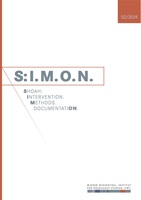“Wheels and Cogs” Why Viennese Policemen Guarded Deportation Transports, 1941–1943 Part 1
“Wheels and Cogs” Why Viennese Policemen Guarded Deportation Transports, 1941–1943 Part 1
Author(s): Mark LewisSubject(s): Political history, Social history, WW II and following years (1940 - 1949), Fascism, Nazism and WW II, History of the Holocaust, History of Antisemitism
Published by: Wiener Wiesenthal Institut für Holocaust-Studien
Keywords: Austria Vienna Police; Holocaust deportations; Vienna deportations; Wiener Sicherheitspolizei; Schutzpolizei;
Summary/Abstract: Viennese policemen, part of the German Schutzpolizei (uniformed police) after March 1938, complied with orders to guard deportation transports of Austrian Roma and Jews between 1941 and 1943. Previous theories about German police have argued that they engaged in mass murder in Eastern Europe, especially in Poland, due to peer pressure, obedience to authority, ideological training in police schools, or the influence of ideological careerist junior officers. This study, based on the personnel files of sixty-five policemen, 98 per cent of whom were hired before the Nazis came to power, contests those theories. It proposes a fourstage, time-dependent hypothesis about why police obeyed orders. First, police hired after the First World War had absorbed anti-Jewish and anti-Roma views present in Habsburg society, the era in which they were born and raised. Second, during the late First Republic and Austro-fascist periods, the police gained greater authority, ignored civil rights, and were institutionally polarised into factions. Third, Austrian and German Nazis transformed the Viennese police between March 1938 and 1940, adopting policies and practices that acclimatised the police to see Roma and Jews as dangerous groups who had to be segregated and pauperised. In the fourth stage, during the Second World War, the police overcame cognitive dissonance about deporting people by justifying their actions to themselves – guard duty was part of their job as members of military police units, and the priority during the war was to protect Germans, not outsiders and foreigners. Due to the length of this study, it will be published in two halves. The first half will deal with the first three stages, prior to the decision to begin the main deportations in 1941. The second half, which will appear in the next issue of S:I.M.O.N., will explain how the police bureaucracy operated and who organised the police units as guards for deportation trains. It will analyse a post-war investigation in which some policemen claimed they had merely “acted under orders”, arguing that their answers were probably coordinated by senior police officials who wanted to reinstate them on the force. This section will also challenge the historical view that the police force was totally transformed after the Second World War, showing that many policemen who had served as deportation guards were rehired.
Journal: S:I.M.O.N. Shoah: Intervention. Methods. Documentation.
- Issue Year: 11/2024
- Issue No: 2
- Page Range: 4-37
- Page Count: 34
- Language: English

